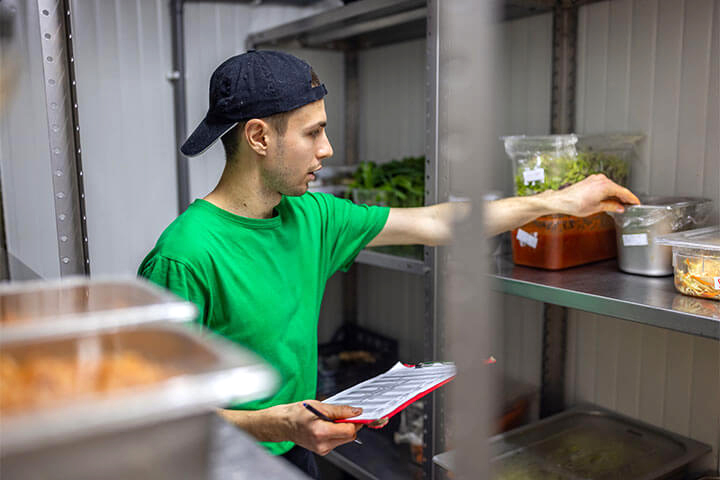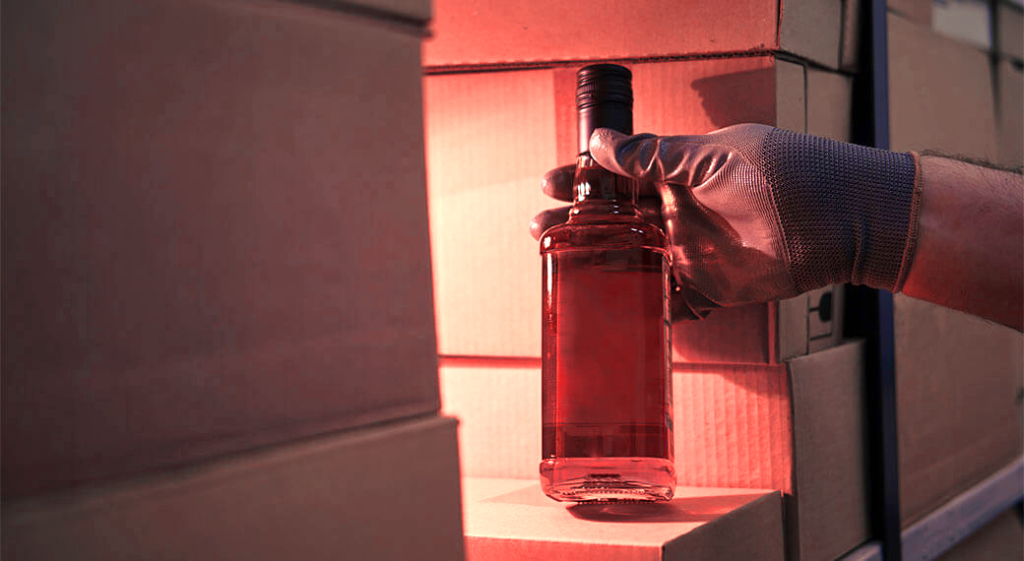Managing inventory in the foodservice industry is essential for ensuring profitability. However, theft and shrinkage can be a major problem, leading to significant financial losses. Reducing theft and shrinkage in your restaurant requires systematic planning and the vigilance of a meerkat. Being that, we provide an overview of theft and shrinkage in the context of restaurant inventory management, as well as tips to help you reduce these losses.
What Is Theft & Shrinkage?

In the context of restaurant inventory, theft refers to the intentional act of stealing inventory or assets. Shrinkage refers to the loss of inventory that occurs due to factors like theft, spoilage, breakage, expiration, improper portioning, or administrative errors. It encompasses both intentional and unintentional loss of inventory resulting in the reduction of inventory levels beyond what can be attributed to legitimate sales or usage.
How Does Theft & Shrinkage in Restaurants Occur?
Theft and shrinkage occurs in foodservice establishments in several ways. Some of the most common methods include:
Employee, Customer, & Vendor Theft

The most common form of theft in restaurants is employee theft. Employees may steal food, alcohol, equipment, and other inventory items for their own personal use. They may also give away food or drinks to friends or family members. Customers notoriously steal flatware and glassware as well as any décor not nailed down.
Some restaurant suppliers or vendors may engage in fraudulent activities. For example, they might deliver fewer items than what was ordered or charge for goods that were never supplied. This form of external theft can impact the restaurant’s inventory and contribute to shrinkage.
Unauthorized Consumption, Over Portioning, & Over Pouring
Employees may consume inventory without permission or give away food or drinks to friends or family members. They might help themselves to food, drinks, or other items without recording it in the inventory management system, leading to inaccuracies and shrinkage.
Some staff members might intentionally provide larger portions of food or pour excessive amounts of alcohol to customers, resulting in increased consumption and decreased inventory.
Waste, Spillage, Inadequate Controls, & Procedures

Accidental or intentional waste and spillage can contribute to inventory shrinkage. Employees may mishandle food or drinks, leading to losses. When accidents and waste occurs, weak inventory management practices, such as lack of proper documentation, insufficient supervision, or ineffective inventory tracking systems, won’t catch these instances and result in inaccurate books. A weak inventory management system can also create opportunities for theft and shrinkage. If there are no checks and balances in place, it becomes easier for employees to exploit your system’s vulnerabilities.
How to Protect Your Restaurant’s Bottom Line

If you hired a “bad egg”, they are likely to exploit any perceived vulnerabilities in your system. Be that as it may, there are things that you can do to prevent theft and shrinkage in your restaurant including identifying potential areas of weakness and adjusting storage procedures. Here are some of the effective ideas restaurants should consider implementing, to tackle common causes of theft and shrinkage.
Reduce Employee, Customer, and Vendor Theft With Loss Prevention Methods

If your budget allows, implement loss prevention measures by installing security cameras throughout the restaurant, including in dining areas, storage spaces, and employee-only zones. Correspondingly, display signage indicating the presence of surveillance to deter potential theft.
By and large, keep a close eye on employee behavior and activities related to inventory management. Watch for red flags such as frequent voids or discounts, unusual inventory usage patterns, or excessive employee consumption during shifts. Moreover, address any suspected irregularities promptly and professionally so your employees understand that you are consistent and serious about inventory management.
For the same reason, develop strong relationships with trusted suppliers and conduct regular audits of deliveries. Verify the accuracy of received quantities, check for damaged goods, and reconcile invoices against actual deliveries. Rather than sitting on any suspicious activity, promptly address any discrepancies with suppliers to ensure fair and accurate transactions.
Accurate Stocktaking & Secure Storage

In addition to conducting vendor audits, regular and accurate stocktaking is vital to identify any variances in inventory levels. To that end, conduct physical counts of all items on a frequent basis, preferably during off-peak hours, to minimize disruptions. Comparing physical counts with recorded quantities in the system helps identify potential theft or shrinkage.
Depending on your establishment, it may be wise to designate secure storage areas for valuable and high-risk inventory items such as alcohol. It’s a smart idea to only allow authorized personnel into these areas.
Technology & Reports H3

Without reservation, employ a reliable POS system that integrates with your inventory management software. This allows for real-time tracking of sales, inventory usage, and depletion rates. Just as we recommended restricting access to high value items, it’s also advisable to utilize security features in the POS system—such as unique user IDs and passwords—to monitor and restrict access to sensitive functions.
In order to maintain control over your supplies and ingredients, track and record all inventory items, their quantities, and their values. Utilizing inventory management software can streamline this process, enabling real-time monitoring, accurate forecasting, and identifying discrepancies promptly. Regularly reviewing inventory reports to analyze variances will cut back on investigation time for any significant discrepancies or consistent patterns of shrinkage.
Educate Staff Using Clear Policies & Procedures

Establish clear policies and procedures for inventory management, including receiving, storage, and issuance processes. Provide your employees with clearly written documents that explain step-by-step instructions for inventory-related tasks. As a result, you can expect more consistency and fewer errors. Also, be sure to communicate these policies regularly and enforce them consistently.
Above all, educate and train staff members on the importance of inventory control and the negative impact of theft and shrinkage. Make them aware of the potential consequences, such as loss of profits, increased prices, and their potential termination of employment. Encouraging a culture of honesty and respect throughout the team will garner more positive results than cultivating a culture of fear and mistrust.
Don’t Let Theft & Shrinkage Take a Bite Out of Your Profits

By implementing these detailed measures and maintaining a strong focus on inventory control, restaurant owners and managers can minimize theft and shrinkage, protect their profits, and promote a culture of integrity within their establishment.



